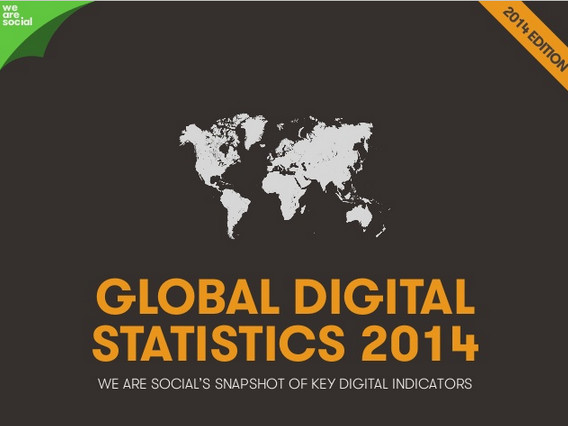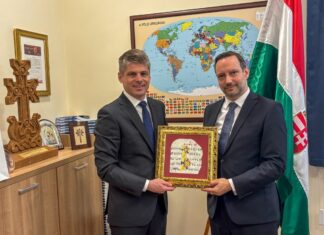We strive to examine issues important to U.S. national security from a post-partisan perspective, meaning we try to break through the spin to find ideas we can use to encourage fresh thinking and build genuine consensus.
No Book, No Class
About The Author (Dylan Kissane):
Dylan Kissane is Professor of International Politics at CEFAM in Lyon, France. He is the curator of The Ivory Tower blog on E-IR.
The sun is shining, the birds are singing, the snow has melted and…
Well, not quite.
It’s cold, overcast and wet as I type this on a Friday morning at CEFAM. If there are birds about then they are keeping well hidden and, in any case, I’d barely have a chance to notice them, so pressed are the first weeks of the new semester.
The Spring semester is underway here in Lyon and I am teaching a heavy schedule once again. I have two sections of ‘Issues in International Politics’ – one online, one face-to-face – and two sections of ‘Dimensions of Diversity’, an interdisciplinary undergraduate class built on foundations of sociology and public policy. Add to this a section of ‘International Business’ being delivered as a mixed-mode class and a graduate level ‘Global Assessment’ class and I’m going to be busy teaching all semester.
There are only a few changes for the face-to-face ‘Issues in International Politics’ course but one of them is significant. After a few semesters of not assigning a textbook I decided that something was again required to help fill in the gaps between the assigned readings (mainly journal articles and scholarly works) and the classes. I went for Routledge’s International Relations: The Key Concepts that came out in a third edition over the winter break an, having used an earlier edition of the book as an undergraduate myself, I was confident it would fit well with the course material. It’s an accessible, well thought out treatment that gives a two or three page treatment to major themes and issues in international politics. There are a couple of pages of ‘ethnic cleansing’, three pages on ‘mercenaries’, a couple on the ‘Prisoner’s Dilemma’ and a short but efficient two page treatment of ‘Order’, too. My hope is that the students will dive into the book for key terms, use it as a basis for seeking scholarly works (it has a great bibliography) and have a first point of reference for unfamiliar words or concepts they encounter in their reading.
CEFAM has a strict policy that, where books are assigned by professors, students must not only buy the book but bring it to class. Re-introducing a book to the politics class means enforcing this policy and, while there’s a little leeway for the first week of class, as of today the rule is: no book, no class.
As a professor I can understand the reason for the rule. A student who buys the book and is required to bring it to class is probably two steps closer to reading it than the student who decides not to buy it and borrow from a friend or find a copy in the library. As well, and in the case of International Relations: The Key Concepts, having the book on hand in class means that when I throw out a term like ‘loose nukes’ or ‘tragedy of the commons’ an enterprising student can check their book, find the definition, and fill in the blanks for themselves.
The down-side of a rule like this is that there are going to be times this semester that I am forced to ask students to leave the class for not bringing their book and that these students will miss out on a class that is important to their understanding of the course. For example, today’s class will consider liberalism and any student who is absent or who is excluded from the class for not bringing their textbook will miss out on one of the key theories of international politics. As well, with a class of 25 students, there are at least 25 personal situations that I don’t know much about that could have led to the student arriving sans book: no money to pay for the textbook this month, maybe it was left on a desk at home and the student had no time to return to get it, maybe a friend borrowed it and didn’t return it on time or some other excuse for arriving on time, ready to study, and ready to learn but, this time, without a book. Consistency and fairness means I have to apply the same rule for everyone and for every class, but it sure does bite to see students willing to learn and then showing those same students the door, praying they’ll remember the book next time.
* * * *
They’ll be a few changes to the blog over the next few weeks as we shift focus from simply my experiences at CEFAM to an even broader vision of teaching and learning in IR. Over the next few months we’ll welcome guest posts from academics around the world, posts from students about their experiences in the IR classroom, I’ll update you on some emerging projects in teaching and learning in IR (including one that will see me travel to Greece and take the POL 210 class from CEFAM on the road), and I’ll continue to document the challenges of teaching international relations in a business school. Keep an eye out for our re-launch and keep dropping by in 2014.
—
Read more from Dylan Kissane in his e-IR blog Political Business
[Today in PD] Which Artworks Should We Save? Cash-Strapped Italy Lets Citizens Vote
i i
Ministry of Heritage and Culture and Tourism via Facebook
When it comes to Italy’s enormous art heritage, officials are often faced with an unbearable choice: Which pieces should be saved when the government can’t afford to save them all? Now, thanks to an online vote, it’s up to Italian citizens to answer that tough question. In the end, some art will get a new lease on life, but many works that epitomize Western civilization remain seriously in danger.
On a recent night inside the National Museum of Rome, musicians and conceptual artists performed a piece of avant-garde theater as sculptures of Apollo and Dionysus looked on.
i i
hide captionPietro Perugino’s painting of a Madonna and Child — shown above in the context of its L’Arte Auita L’Arte campaign page on Facebook — won the popular vote.
Ministry of Heritage and Culture and Tourism via Facebook
Pietro Perugino’s painting of a Madonna and Child — shown above in the context of its L’Arte Auita L’Arte campaign page on Facebook — won the popular vote.
Ministry of Heritage and Culture and Tourism via Facebook
The after-hours event is one of dozens taking place at state museums and monuments nationwide in a program called L’Arte Aiuta l’Arte, or “Art Helping Art.” The idea is to raise awareness — and money — for those artistic treasures that need restoration, something the culture ministry says has become a Sisyphean task amid the euro crisis.
“Italy needs help restoring its art and monuments,” says Anna Maria Buzzi, whose job is to protect and promote Italy’s artistic heritage. “Ticket sales alone are not enough to completely fund their upkeep. We don’t even have a full understanding of how much art exists in the country. We have to start somewhere, so we came up with ‘Art Helping Art.’ ”
Here’s how it works: The government selected eight pieces of art from across Italy deemed to be in need of repair, ranging from an ancient Roman marble horse to a painting by Renaissance master Pietro Perugino. Then, it posted pictures of them on Facebook, and asked people to vote for the work they felt was most deserving of a fix-up. The work that draws the most clicks wins the money raised at these late-night events.
“The strength of a democratic institution is listening to its citizens,” says Buzzi. “Giving people the right to choose makes them more invested in their own heritage. It makes them care more. If you give the people more responsibility, they’re more likely to take an interest in their own culture.
Rome archaeologist Gabriele Cifani describes the program as “extremely demagogic.”
Just outside the Colosseum, which is currently being restored by a private investor, Cifani points out what he calls one of Italy’s many “scandals.” As we enter the ruins of Domus Aurea — the once opulent “Golden House” built by Emperor Nero in the first century — he tells me to keep an eye on my recording equipment. Broken wine bottles litter the ground in what’s become an unauthorized camp for scores of the city’s homeless.
“We are inside an [illegal] shelter,” says Cifani. “We are inside an area for homeless. It’s completely abandoned. You can’t bring people here because it’s a dangerous area, above all when it’s dark.”
Critics point out that countries like France and Germany spend billions more than Italy maintaining their cultural heritage. Out of the entire European Union, only Greece devotes a smaller percentage of its national budget to the arts.
“Italy is committing cultural suicide,” says Luca Carra, who works for Italia Nostra, Italy’s oldest nongovernment historic preservation group. “… Every time it rains, for instance, some roof or walls or some part of these monuments fall down, fall apart. So this is really, I think it’s sort of a national emergency. It’s a cultural emergency, but I think it’s more than a cultural emergency.”
Even Pompeii — the country’s prize pony of archaeology — suffers routine collapses, as do countless other lesser-known sites. But the government is optimistic. The late-night fundraisers have been a big hit. And so was the online vote, which closed at the end of the year. The winner is Perugino’s painting of a Madonna and child. As for the seven other objects, the government says it will fix them soon. But Italy’s revolving door of politicians have made similar promises in the past. And there are no firm plans to take another roster of candidates for restoration to Italian voters.
[Today in PD] Dr. Prabhjot Singh On Sikh Americans: Every Moment You’re An Ambassador
Q. In 2012, before you were attacked yourself, you co-wrote an op-ed for The New York Times about the need for the FBI to specifically track hate crimes against Sikhs. Just last year, the FBI decided to start tracking hate crimes against Sikhs. How did you get interested in writing about this issue initially?
A. I think the issue itself is really on the community’s mind. I don’t mean to think of the Sikh community as having one kind of mind. We have a lot of incredibly different perspectives, but 700-plus attacks, hate crimes (against) Sikhs after 9/11 have really led the community to want to understand best how to resolve this problem … A New York Times op-ed (like mine) is an important visual indicator that something should change, but there is an incredible grass-roots and well-organized movement from such a large range of groups (like the Sikh Coalition and the Sikh American Legal Defense and Education Fund) to see this change happen that when the FBI actually considered doing so, I think they really saw that it had broad support. Congressional hearings later that fall and in the spring underscored just the degree of support that was coming from congressmen, from public advocates, from citizens — some were Sikh, and many were not.
Q. What are some ways in which you think the FBI tracking hate crimes will directly benefit the Sikh community, and does this directly give Sikhs greater protections against hate crimes?
A. Surveillance itself is protective, I experienced that firsthand … Likely it will happen that other Sikhs will be attacked in hate crimes over the next years. But what we can do is really start to understand where, how and why hate crimes occur against Sikhs or other groups. And that forms the basis of being able to make specific suggestions, becoming proactive instead of defensive and preventative instead of dealing with an aftermath of these events.
Q. Having experienced a violent hate crime yourself, how will this experience impact any further work you do on behalf of the Sikh community to increase awareness or anything else?
A. I think two ways. One, in my own professional work, where I work on community health and health systems in America, I think something that struck me deeply is that violence and safety are as much a part of a community’s sense of its own health as diabetes and heart disease. And I think that really hit home for me just last fall, and as a result, I really had to look more deeply at how I’m going about my work so I could start to understand how to integrate that very personal insight into it. In terms of advocacy for Sikhs, I think certainly the story of what happened to me has traveled quite a bit, and I think it’s important to understand how to be an advocate for the Sikh community and at the same (time) make sure that what we learn and how we share it benefits others. So it certainly deepens my commitment and resolve to being a community advocate. But I think that the biggest takeaway is that community advocacy is both at the local level and for Sikhs across the country.
Great victory for @MFAKOSOVO and @Petrit as Kosovo attains status on #Facebook
The result is a success for all @DigitalKosovo partners, including @NorwayMFA @foreignoffice and @ksBritish.
here is the article by the New york Times on Kosovo’s #digitaldiplomacy strategy and the recent successes:
Social, Digital & Mobile Around The World (January 2014)
On Wednesday, We Are Social Singapore released its 2014 Social, Digital & Mobile Around The World report, which offers key statistics, data and behavioural indicators for social, digital and mobile channels around the world.
There are currently 2.4+ billion Internet users (35% of the world’s population), among whom 1.8+ billion are active. The most connected regions include North America, Western Europe, Oceania, and Central and Eastern Europe, with Internet penetrations rates of 81%, 78%, 63%, and 54% respectively.
When it comes to social networks, the top sites gained more than 135 million new members last year. North America remains the most socially connected at 56%, while Western Europe, Oceania, South America, and Central America are “trailing” about 10 points behind.
“It also appears that social media is now an engrained part of the lives of people across different demographic groups,” says Simon Kemp on the We Are Social Singapore Blog. “This increased ubiquity may result in some changes to the specific demographic bases of individual platforms, but even if people’s habits are changing, it appears that people are moving from one social platform to another, rather than deserting social media in its entirety.”
At 6.5 billion, mobile subscriptions are also at an all-time high. Some regions even sport penetration levels exceeding 100%:
- North America: 101%
- Southeast Asia: 109%
- Middle East: 112%
- South America: 124%
- Central and Eastern Europe: 151%
Interested in data about specific countries? The report reveals numbers for 24 nations, including Argentina, Brazil, France, Germany, Canada, Singapore, South Korea, Thailand, the United Kingdom, India, the United Arab Emirates. Here are some highlights:
- Most time spent daily on the Internet: Brazil (6.1 hours from laptops/desktops) and Argentina (3.4 hours from mobile devices)
- Most time spent daily on social networks: Argentina (4.3 hours) and Mexico (3.8 hours)
- Highest social penetration rates per Internet users: Canada (82%) and United Arab Emirates (81%)
- Highest mobile penetration rates: United Arab Emirates (252%) and Saudi Arabia (197%)
This report presents all the key statistics, data and behavioural indicators for social, digital and mobile channels around the world. Alongside regional pictures that capture the stats for every nation on Earth, we also present in-depth analyses for 24 of the world’s largest economies: Argentina, Australia, Brazile, Canada, China, France, Germany, India, Indonesia, Italy, Japan, Mexico, Nigeria, Poland, Russia, Saudi Arabia, Singapore, South Africa, South Korea, Turkey, Thailand, the UAE, the UK, and the USA. For other reports in this series, please visit http://wearesocial.sg/tag/sdmw
You will find all the facts and figures from the report in the slides below.
[slideshare id=29791716&doc=wearesocialsguidetosocialdigitalandmobileworldwidejan2014v01-140107235800-phpapp01]
[Today in PD] Will Japan Abandon Pacifism?
It wasn’t a reassuring moment.
Speaking at the World Economic Forum in Davos, Switzerland on Wednesday, Shinzo Abe, the Japanese prime minister, compared recent tensions between China and Japan to the rivalry between the British and German empires at the start of the 20th century. Like the Chinese and Japanese are today, he noted, the British and Germans were close trading partners in 1914—until World War I broke out. Abe argued that China’s military buildup is destabilizing the region, warned of “inadvertent conflict,” and admitted that the two countries didn’t have an “explicit roadmap” to resolve one. Then the Japanese leader packed his bags and traveled to China’s rival, India, for an official visit.
Although relations between China and Japan have never been warm, diplomatic efforts between the two countries have deteriorated rapidly since November, when China unilaterally expanded its air-defense zone to include the disputed Senkaku islands in the East China Sea (China claims the five uninhabited islands, which it calls the Diaoyu islands, as its own territory). Abe, whose country has controlled the islands for decades, rebuked China’s move for “unjustly violating the freedom of aviation over the high seas.”
In retaliation, Abe paid a highly symbolic visit to Yasukuni Shrine in late December, drawing harsh condemnation from foreign ministries across the Pacific. The controversial memorial to Imperial Japan’s war dead, including Hideki Tojo and 13 other World War II-era war criminals, is a touchstone for the polarizing debate on Japanese nationalism, militarism, and historical memory in East Asia. Few actions by a Japanese prime minister could have been more provocative to China, where patriotism is closely intertwined with anti-Japanese sentiment.
Relations plummeted thereafter. In British newspapers, dueling editorials devolved into Chinese and Japanese officials comparing one another to Lord Voldemort, the fictional archvillain from the Harry Potter novels. Cui Tiankai, China’s ambassador to the United States, invoked Japan’s aggressive imperial past in a Washington Post op-ed, while Kenichiro Sasae, his Japanese counterpart in Washington, retaliated in an op-ed of his own by declaring, “It is not Japan that most of Asia and the international community worry about; it is China.”
Standing at the center of controversy is a familiar feeling for Shinzo Abe. A conservative nationalist, he famously denied in 2007 that there had been any coercion of the 250,000 foreign “comfort women” who were forced into sexual slavery in Japanese military brothels during the war. Abe also supported revising school curricula to downplay Japanese wartime atrocities, a move that has previously prompted protests and diplomatic rebukes in China, South Korea, and the Philippines, whose people suffered greatly under Imperial Japanese rule in the early 20th century.
To this day, World War II’s scars run deep in East Asian politics and shape Japan’s defense policies. The conflict’s horrors motivated the Allied powers to rewrite many of the defeated Axis nations’ new constitutions, including Japan’s, to inhibit future aggression. Article 26 of the German constitution, drafted in 1948, declares that “[a]cts tending to and undertaken with intent to disturb the peaceful relations between nations, especially to prepare for a war of aggression, shall be unconstitutional.” Italy similarly “rejects war as an instrument of aggression against the freedom of other peoples and as a means for the settlement of international disputes” in Article 11 of its post-war constitution. Article 9 of Japan’s constitution, however, goes much further than the others in abolishing militarism:
1. Aspiring sincerely to an international peace based on justice and order, the Japanese people forever renounce war as a sovereign right of the nation and the threat or use of force as a means to settle international disputes.
2. In order to accomplish the aim of the preceding paragraph, land, sea, and air forces, as well as other war potential, will never be maintained. The right of belligerency of the state will not be recognized.
These prohibitions leave Japan, the world’s third-largest economy, heavily reliant on the United States for self-defense and far weaker than its neighbors. Japan spends roughly $59 billion per year on defense, for example, while China spends more than $166 billion. The Japanese Self-Defense Forces, or JSDF, which is strictly forbidden from conducting combat operations, is only one-third the size of South Korea’s armed forces, one-sixth the size of North Korea’s, and one-tenth the size of China’s.
As 1945 grows more distant, Japanese leaders have become less hesitant about non-combat JSDF deployments and their nation’s strategic role in East Asia. Yasuhiro Nakasone, a former Japanese prime minister and firm ally of the Reagan administration, referred to the Japanese archipelago as “an unsinkable aircraft carrier” during the 1980s. After the Cold War ended, Japanese leaders began to contribute small numbers of unarmed troops to UN peacekeeping operations and humanitarian operations. The government of Junichiro Koizumi, in which Abe served as chief secretary, deployed 600 unarmed JSDF troops to Iraq between 2004 and 2006 to rebuild public works damaged by the war.
But Abe wants to go even further. Since retaking the premiership in 2012, his government has increased defense spending, passed a strengthened state secrets act at the United States’ behest, and deployed JSDF ships to patrol near the disputed Senkakus in defiance of Chinese government protests. Tokyo even vowed to obtain a ballistic missile program of its own after North Korean missile tests last spring. Most importantly, Abe wants to follow through on a long-desired goal to revise the Japanese constitution, which has not been amended since U.S. occupation authorities first drafted it after the war.
Constitutional revision is still a long-term goal for now, though. Japan’s arduous amendment process requires a two-thirds vote in both chambers of parliament (Abe’s Liberal Democratic Party controls a sizable majority in the lower House of Representatives, but has only a coalition majority in the upper House of Councillors) and a national referendum. In his New Year’s message, Abe himself estimated that the process would only be completed by the 2020 Tokyo Olympics.
But Abe’s not waiting that long to address Article 9. The Japanese government announced last week that it will move to reinterpret its legal stance on Article 9 to allow for “collective self-defense” alongside allied nations—a major shift in Japanese constitutional thinking (the U.S. is bound by treaty to defend Japan in the event of an attack). Abe recently observed that if North Korea launched a missile at an American ship near Japanese waters, Japan currently could not lawfully intercept it. That legal distinction might seem bizarre to other countries with strong alliances and enduring bilateral relations. The United States, by comparison, would not likely restrain itself if a North Korean missile struck Japanese ships near American waters. But Japan’s pacifist streak still runs deep: recent polls showed that 57 percent of voters oppose Abe’s proposed reinterpretation of Article 9, modest as it may be.
Shinzo Abe is unlikely to overcome that cultural taboo against military strength easily. But with tensions in East Asia showing no signs of abating, Japan could suddenly find itself in a crisis where its leaders can simply claim to have no other choice.
[Today in PD] Barricades And Samba In Rio
Surrounded by samba music, residents of the Metro Mangueira favela were celebrating after a week of conflict. The small community is located next to the Mangueira favela, where 18,000 people live and is the headquarters of “Estacao Primeira de Mangueira”, a famous samba school, where musicians like Jamelao and Cartola composed and played. The celebration that night, January 14, was called “debris samba“, organised by residents with the support of political activists.The idea of that celebration was to raise donations for food and clothing.
During the event, participants were also sharing knowledge of how to do live streaming through a cell phone, a strategic know-how for documenting the brutal eviction process which Metro Mangueira has been suffering since 2010. The favela is just 500m away from the Maracana Stadium, where the World Cup final match will take place in July.
This was the second wave of evictions Metro Mangueira has faced. From November 2010 to December 2013, in the name of the World Cup, 637 families were “resettled” in public residential precincts. Initially, around 100 families were placed in a building complex 60 km away from Mangueira. Later, after many protests and resistance, residents were able to negotiate their relocation to closer destinations. However, while “favelados” were being evicted, others were arriving and occupying the derelict houses. Some of these buildings are already semi-demolished; the government intentionally does not remove debris in order to worsen the living conditions for those remaining. The new occupants are even poorer than the original ones, and most of them are homeless.
Currently, desolation is the right word to describe the favela: streets full of garbage, debris, wastewater, rats and insects. In some cases, people enter and exit their homes through holes in the wall. Rio’s mayor contemplates turning part of the area into a commercial centre for automotive mechanics, and another part into a recreational park. None of it, however, is destined for those people presently living in the favela, as the government is considering the case closed since the eviction of the old residents.
Evicting the homeless
Tensions started rising in the favela on January 4, when Wellington Sabino, a local resident and street vendor was killed by the police. On the following day, a small uprising exploded in the favela as a bus was stopped, emptied out and burned to ashes, and an avenue was blocked for several hours. On January 7, police forces came by surprise and immediately demolished 12 houses, with all occupants’ belongings inside. The atmosphere was already very tense.
The police resorted to tear gas, pepper spray and sound bombs to clear the way for demolitions, but the community resisted. Protesters from the favela set up a barricade, burned some of the omnipresent debris and faced the police advance. Media-activists, live-streaming with their cell phones, Twitter accounts and blogs arrived to reinforce the resistance lines, and so did black bloc-style protesters, who emerged as a major force during the protest wave of 2013. The conflict continued until one o’clock at night. The new wave of evictions was suspended, at least for now.
Nobody received any compensation for the eviction and demolition of their homes. It is the standard procedure in Rio: Residents do not receive “allowances” until their houses are actually demolished and they have little room for negotiation with the government. Before the evictions, houses were marked with a number, the “kiss of death”, meaning that the building will not survive an imminent eviction operation. The government told residents they had 15 days to move or face a police operation.
After the evictions on January 7, officials decided to make an offer: a “social rent” of R$ 460 ($200) per month to be paid by the state, until they could be more properly “resettled” in housing complexes outside the favela. The offer divided opinions. It was considered too small of an amount and too much of an abstract promise. The favelados knew that that the more likely option was facing the police.
The situation in the Metro Mangueira favela is just one more in an endless series of evictions perpetrated by the government since Brazil was officially announced a World Cup and Olympic Games host. According to a report published by the People’s Committee for the Cup and Olympic Games in Rio, a comprehensive social movements’ forum, around 3,000 families were already evicted by May 2013, many of them in violent operations backed by the police. More than 8,000 families currently live in areas marked to be removed. Almost all of them are poor people and every marked community is a favela.
Facing the Maracana, the Metro Mangueira favela stands witness- once again- to the fact that poverty cannot be tolerated in the all-new, modern, developed, “clean” Rio de Janeiro. The lesson learned is simple: Limiting gentrification is not a matter of law or democratic procedures, but of struggle. Only an opposition force, boosted by alternative media coverage and organisation, can draw the line and rein in the government’s insatiable drive to put poverty out of sight.
The major wave of demonstrations in 2013, with its self-defence groups, media activism and a general will to stand up and struggle for rights, has brought hope to the favela. The spirit of protest has spread to the favelas and feeds the fire of the favelados’ struggle and their sambas of resistance.
Bruno Cava has a Master’s degree in Philosophy of Law, works with Direito do Comum collective and is the author of “A multidao foi ao deserto; as manifestacoes no Brasil em 2013”.
Rodrigo Bertame is an architect and a blogger, working on favela urbanisation projects.
1193
The views expressed in this article are the authors’ own and do not necessarily reflect Al Jazeera’s editorial policy.
What is identity assurance?
Identity assurance is a new service that will give people a secure and convenient way to sign in to government services.
Why we need identity assurance
The 25 exemplar services (the government services that make up the digital transformation programme) will make it possible to do a range of things you can’t easily do online now; like register to vote, view your driving record or tax details, apply for an apprenticeship and manage your student loan.
When you use these services, you want to be confident that someone else can’t sign in pretending to be you, see your sensitive personal records or use your identity to make fraudulent claims. You want to be confident that your data and services are secure and your privacy protected.
The government departments providing these services need to verify your identity to make sure the right people are accessing the right information. That’s why we’re building the identity assurance service.
How we will provide user choice, control and privacy
When you’re using digital services you want to be sure that your privacy is being protected and your data is secure.
We’ve been working for the last three years with our Privacy and Consumer Advisory Group to help make sure we’re designing a service based on user choice, control and privacy.
Last summer the group published a draft set of identity assurance principles to make sure the service is designed and operates in a way that is transparent, protects your privacy and gives you control over how your data is used. We will be publishing a document in the next few weeks explaining in detail how we’ve designed the service to reflect the principles.
Who will verify your identity
When one of these digital services needs to verify your identity, you’ll be directed to a page on GOV.UK where you’ll be asked to register with an identity provider. If you’ve already registered, you can just sign in.
Identity providers are organisations paid by the government to verify people’s identity so they can sign in securely to government services. Identity providers will have to meet industry security standards and identity assurance standards published by the Cabinet Office and CESG (the UK’s national technical authority).
There are currently 5 identity providers – Digidentity, Experian, Mydex, the Post Office and Verizon – eventually there will be more. You can choose to register with more than one of them, and you can stop using an identity provider at any time.
Why we’re using identity providers
There are 5 main reasons why we’re using identity providers rather than doing this work within government:
1. user choice – you will be able to choose your identity provider(s) and stop using a provider if you want
2. no centralised identity database – instead, to protect users’ privacy, each identity provider will be responsible for securely and separately holding data about the users that have registered with them. Each government department service will only have access to the data it needs.
3. security – using several identity providers is more secure and less vulnerable; there is no single point of failure and no single service that holds all the data in one place
4. developing a market – we’re giving identity providers freedom to design services to meet the standards. This will allow them to develop services that can be used by the wider public and private sector, which will help to reduce costs.
5. making the most of available technology – the technology and methods for identity verification are constantly evolving; specialist private sector organisations are better placed than government to keep up with these developments
Identity providers will have to operate according to strict security and operations standards, to protect users’ security and privacy and to make sure the required standards are met.
How the identity assurance process works
Your chosen identity provider will ask you for some information that helps establish that you are who you say you are. No single piece of information is sufficient to achieve the required standards; they will need to ask you for a range of information.
Identity providers will check to make sure information you’ve provided is valid and genuine. Your chosen provider will be able to send your passport and driving licence details to the government agency that issued them to ask if they match a valid record. Identity providers will also be able to check databases of known fraudulent documents, including police databases. They won’t have access to confidential information held about you by other government services. They can check other records they have access to from within the private sector, like information from credit reference agencies.
One of the benefits of the new service is that most people will be able to complete the registration process online, without having to wait for documents or instructions to be sent in the post as happens with existing services like Government Gateway.
We’re working with the identity providers to make sure that people who don’t have specific official documents like a passport or driving licence will still be able to achieve the required level of assurance through other means.
Once the identity provider has verified your identity, you will be given a secure means of signing in.
Different levels of assurance for different services
Some services don’t need to know who their users are. If you want to order a document, the service provider only needs to know where to send it. Other services will need to be more confident that you are who you say you are; for example, if you’re going to be able to see sensitive personal details, or make a claim for payment.
Each service will assess risks by considering things like whether sensitive data can be seen and whether money transactions take place, in order to decide what level of identity assurance they need.
The guidance on how to assess risks to online services is published on GOV.UK.
Identity assurance will initially be available for services that need to be confident that a user is who they say they are to ‘level of assurance 2’ according to the published guidance. This is a moderate level of security, more than just a basic check, and enough to be able to access quite a big range of services.
What’s next
By March 2014, we will be in private beta and the first users will be able to use identity assurance to sign in to a government service. The private beta is the first version of the service, available to a small number of selected users so we can test and develop it further.
The private beta will initially include two exemplar government digital services – HMRC’s PAYE and DVLA’s view driving record service. These services will use identity assurance to allow about 2,000 users to sign in securely. We’ll use the private beta to learn from our first users’ experiences and continue to develop the service. From April onwards, we’ll start adding more services and more users.
We’ve been blogging about our work on the GDS blog and more recently on our own identity assurance programme blog. We’ll be producing a lot more posts over the coming weeks and months; looking at different aspects of the service, sharing what we learn from the private beta, reporting on our ongoing user research and hearing your feedback.
We have a range of topics we’re planning to post about, and we’re keen to answer questions like the ones Paul Clarke posed in his recent post. If you have any issues you want us to cover please let us know.
Follow Janet on Twitter and don’t forget to sign up for email alerts.
You may also be interested in:
Identity Assurance: First delivery contracts signed
Advisory group publishes identity assurance principles for consultation
5 Things Diplomats Should Avoid On Facebook
Thanks to DIG IN DIP and Sharon Singer http://digindip.com/2013/03/31/5-things-diplomats-should-avoid-on-facebook/#!
March 31, 2013
Successful diplomats often become mini celebrities in the communities they serve. In addition to promoting their country’s interests and conducting diplomatic efforts using social media platforms, diplomats, being human, have their own personal Facebook, LinkedIn and Instagram accounts.
Senior diplomats often have a fan page, managed by embassy or consulate staff,
Obama Rejects Wearing Mickey Ears. Click on pic for full story
and for the most part, the fan pages or official twitter account act as another channel to amplify their country’s voice.
But for those managing their own personal accounts, the challenges are even greater.
Not to mention the hired employees serving their diplomatic mission who at times, forget that although it is their personal account and they are not the diplomats, it is public and their posts have an effect on the mission’s overall online presence.
A quick scan of junior diplomats and hired staff accounts reveals that they are not all aware that comments or opinions they would never express publicly in person should most definitely not be visible to all on Facebook.
Diplomats are human and as humans, they wish to share their thoughts and experiences with their families on the other side of the world.
Here are 5 recommendations based on a what I found in senior, junior and diplomatic staff I have been monitoring for the purpose of this post:
1. Keep your account public but make your personal pictures private or limited to family and close friends.
2. Do not like or comment on local politicians pages. This should be a given. Your professional account may certainly follow politicians as long as you follow all candidates equality and refrain from commenting, since this can and will be interpreted as showing active involvement in local politics.
3. As hard as it may be, avoid posting statements about your own country’s political figures, especially during election season, a time when the rest of the world may be taking a closer look at what is happening in your country.
4. If you are one of those diplomats who rightfully take advantage of being in new surroundings and enjoy spending your free time traveling, by all means, don’t hesitate to share your experiences, but be wise. You do not want to come across as ‘all fun and no work’ (sponsored by public funds).
5. It is truly wonderful to have a friendly working environment at your offices, but a line must be drawn somewhere and it better be Clear on Facebook. A trail of comments made by embassy staff and local community members on a diplomat’s photo wearing Mickey Mouse ears in Disney World from simply cute to absolutely ridiculous. Not to mention the long term managerial challenges you will face upon your return from your lovely vacation.
The best way to approach this all relies heavily on common sense and the constant thought that should always echo in your mind when representing something greater than yourself:
WOULD I ALLOW MYSELF TO BEHAVE THIS WAY OFFLINE?
The answer, multiplied by the combined sum of friends and followers on your personal and professional accounts should be enough to keep you from embarrassing yourself, your mission and your country.
http://digindip.com/2013/03/31/5-things-diplomats-should-avoid-on-facebook/#!
[ct_toggle title=”About the Author”] About Dig in Dip Digging Deep into the challenges of the world of Digital Diplomacy sharon singer deputy managing director of new family, former director of public affairs and socail media at the israeli consulate in philadelphia. Social media guru Sharon Singer Photo by: Louiz Green Though there is yet an official definition or the term Digital Diplomacy, the challenges in conduction effective public diplomacy via social networks imposed on organizations and governments are clear and are constantly revealing themselves further on a daily basis. In this blog, I will attempt to map out these challenges, study cases, propose solutions and give tips based on my experiences in this fascinating growing field of study and practice. My name is Sharon Singer. As the Director of Public Diplomacy at the Consulate General of Israel to the Mid-Atlantic Region, I specialized in strategizing and conducting the mission’s diplomacy and outreach efforts utilizing social media. I traveled across the USA consulting organizations and speaking on numerous college campuses about digital diplomacy, social media and more. I have trained marketing professionals in various organizations and consulted companies seeking to improve their brand’s online reputation. Prior to that, I served as the Chief Training Officer of the IDF (Israel Defense Force) Foreign Relations and Strategic Planning Division as well as Head of the Operations Desk at the IDF’s Spokesperson’s Division, ending a 9 year military career at the rank of Major. I studied advertising in Tel Aviv where I live and work today as an independent social media marketing and PR consultant, specializing in digital diplomacy and place positioning. [/ct_toggle]












